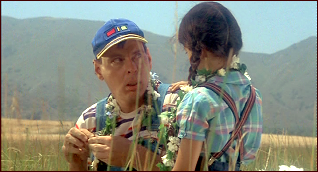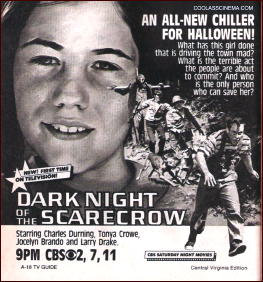Mon 16 May 2016
A Book! Movie! Review by Dan Stumpf: SEBASTIEN JAPRISOT – The 10:30 from Marseilles / THE SLEEPING CAR MURDERS (1965).
Posted by Steve under Mystery movies , Reviews[3] Comments
SEBASTIEN JAPRISOT – The 10:30 from Marseilles. Doubleday Crime Club, hardcover, 1963. Pocket, paperback, 1964. Souvenir Press, UK, hardcover, 1964. Originally published as Compartiment Tueurs, Paris, 1962; translated into English by Francis Price.
THE SLEEPING CAR MURDERS. Fox, 1966. First released in France, 1965, as Compartiment tueurs. Yves Montand, Simone Signoret, Jean-Louiis Trintingnant, Michel Piccoli, Catherine Allegret and Jacques Perrin. Written and directed by Costa-Gravas.
Two approaches to the same story, with striking differences.
In the book, the 10:30 a.m. train from Marseilles pulls into Paris and the guy who cleans out the cars finds a dead woman, strangled in her berth (one of six) in a sleeping car. The Police begin their investigation at the logical place: find out who else was in that compartment and see what they know.
Inspector Graziani and his assistant Jean-Lou get the unenviable assignment of tracking them down, with the dubious help of their superior, a sub-chief who likes to talk in pithy but useless aphorisms (“Cover everything. It’s always where you don’t look….â€) whereupon….
We cut to Berth 226 and the man who used it last night: What he was doing there, how he interacted with the other passengers, and his reaction on finding out the Police want to talk to him. Then, as he rehearses his story, someone comes up from behind and shoots him.
Graziani and Jean-Lou, meanwhile, are still running down leads and find themselves with a problem: One passenger tells them there was a berth unoccupied; another passenger insists there was a man in it; and the woman who bought the ticket maintains she was there all night.
Then we cut to another Berth and the woman who used it; what she was doing on the train, what she saw there, and a long bit about her background. She tells the Police everything she knows, and after they leave, someone comes up from behind and shoots her.
And so it goes as we follow the investigating officers, then switch to another passenger… who also ends up dead. And then another. And then… well, you get the idea; someone is killing everyone who was on the train that night. But why? And how is the killer finding them?
Then, as we’re running out of berths, the pattern breaks and we get the answer to the riddle of the not-empty bed. We also get a charming tale of young love and youthful idiocy, mixed with a tense cat-and-mouse between the police, the killer, and his last victim.
Japrisot’s puzzle is a tricky one, and I applaud his craftsmanship, but I have to say things tend to drag a bit when he details the lives of his passenger/victims. It’s as if he’s more interested in the puzzle than the characters — and it shows.
Costa-Gravas’s film suffers from something similar; things drag seriously when he gets into the minutia of the characters involved, but he manages to save the effort with some sly visual tricks and camerawork that manages to be stylish without showing off.
Interestingly, he also chooses to reconstruct the story in linear fashion. We start with everyone getting on board before the murder, see them interact, understand the problem of the empty berth right from the start, and get involved with the young klutzes who end up being pursued by the killers.
Yves Montand has the dog-weary look appropriate for a police detective, and Simone Signoret radiates her usual overstuffed star power, but the most interesting performances come from Catherine Allegret and Daniel Perrin as a pair of youngsters caught up in the machinations of Japrisot’s tricky plot. Together they convey the kind of emotional reality one finds in the best films of Francois Truffaut, and I found myself wanting to see more of their affairs and less of the murders, well-done though they are.
And one other nod to cinematic convention: Where the book wraps up with off-page arrests, interviews and confessions, the movie ends with a car chase and shoot-out; well done, but I still wanted to see more of those crazy kids.




